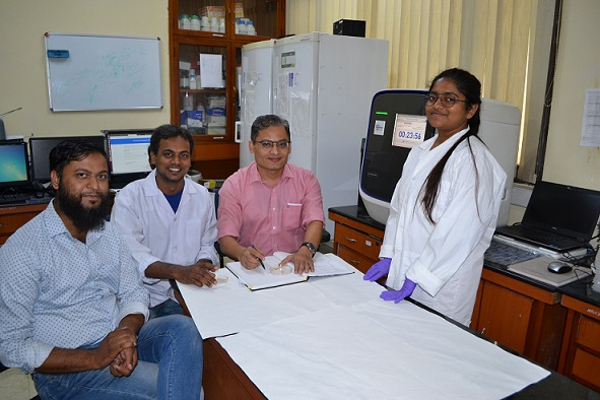Rice productivity in India is low compared to other countries like China and Japan though it has the largest area under rice cultivation. Now scientists at the National Institute of Plant Genome Research (NIPGR) here have identified a gene that is involved in regulating the size of rice grain.
The new development represents a new approach towards developing rice varieties that produce bigger and consequently heavier grains.
The researchers had found in earlier studies that expression of a particular gene, OsMed15a, was higher at different stages of seed development. The observation led them to explore its role further. They scanned 509 different rice genotypes and found that the nucleotide sequences of the OsMed15a gene varied depending on size of grain. OsMed15a was also found to play major role in regulating the expression of three other genes – GW2, GW5 and DR11- which determine grain size and weight.
“ Indians prefer long and slender rice grains. There are some small grain rice which are full of pleasant aroma. ”
“When we suppressed the expression of OsMed15a in transgenic plants using RNAi technology, the seeds became smaller and wider,” explained Dr. Jitender K. Thakur, lead researcher, while speaking to India Science Wire. For further work, the group is collaborating with Ranchi-based Indian Institute of Agriculture Biotechnology so that grain size could be increased substantially through standard breeding methods.
“This study is important as it establishes OsMed15a as a connecting link between some of the different genes important for grain size/ weight trait in rice. In the next phase, using high throughput ‘omics’ tools, we would be delineating complete network of genes and proteins being connected through OsMed51a,” Dr. Thakur said.
He also noted that the size and shape ofrice grain is not only important for boosting yield but also contribute to the market value of rice. “Indians prefer long and slender rice grains. There are some small grain rice which are full of pleasant aroma. We are trying to introgress long grain allele of OsMed15a in these varieties so that the seeds become longer. We hope that in this way we would be able to produce location-specific long grain aromatic rice”, he added.
The research team included Dr. Swarup K. Parida, Nidhi Dwivedi, Sourobh Maji, Mohd Waseem, Pallabi Thakur and Vinay Kumar. The study results will be published in journal BBA – Gene Regulatory Mechanisms. This work was supported by grants from Science and Engineering Research Board (SERB) and Department of Biotechnology (DBT).
India Science Wire
Source: Vigyan Prasar
Image Courtesy: Vigyan Prasar
You may also like
-
New Heat-Based Approach To Cancer Treatment Can Reduce Chemotherapy Doses
-
Scientists Take A Major Step Towards Unification Of Classical & Quantum Gravity
-
India Graphene Engineering and Innovation Centre (IGEIC) Under the Vision of Viksit Bharat@2047 Launched
-
New High-Performance Gas Sensor can Monitor Low Level Nitrogen Oxides Pollution
-
Antidepressant Drug can be Repurposed for Treating Breast Cancer
